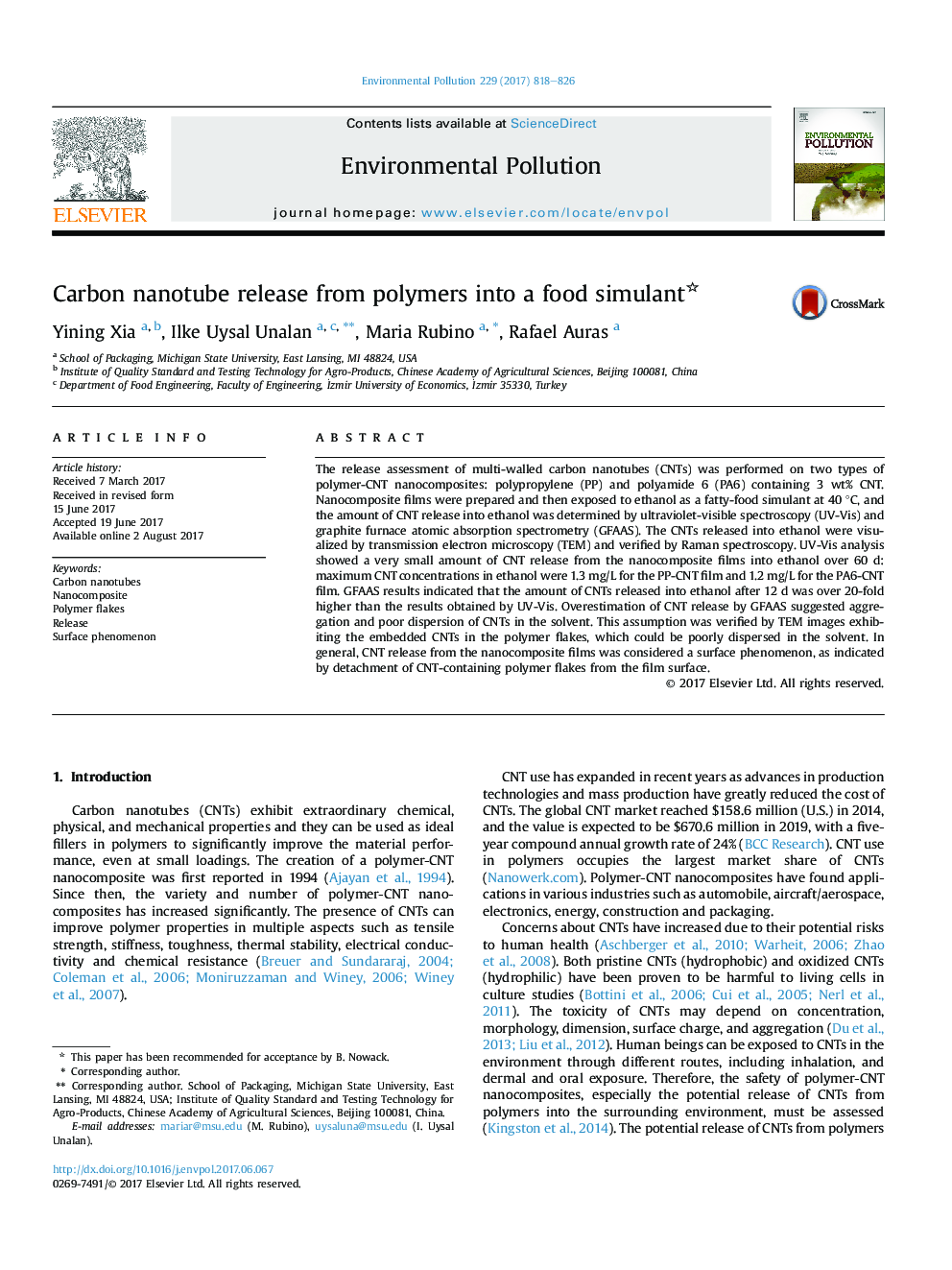| Article ID | Journal | Published Year | Pages | File Type |
|---|---|---|---|---|
| 5748829 | Environmental Pollution | 2017 | 9 Pages |
â¢Release of CNT from polypropylene and polyamide nanocomposites were quantified and validated with TEM and Raman.â¢Spectroscopy and silane-labeled CNT were used for tracking the release of CNT.â¢The release behavior of CNT from nanocomposites was mostly generated from the polymer surfaces.
The release assessment of multi-walled carbon nanotubes (CNTs) was performed on two types of polymer-CNT nanocomposites: polypropylene (PP) and polyamide 6 (PA6) containing 3 wt% CNT. Nanocomposite films were prepared and then exposed to ethanol as a fatty-food simulant at 40 °C, and the amount of CNT release into ethanol was determined by ultraviolet-visible spectroscopy (UV-Vis) and graphite furnace atomic absorption spectrometry (GFAAS). The CNTs released into ethanol were visualized by transmission electron microscopy (TEM) and verified by Raman spectroscopy. UV-Vis analysis showed a very small amount of CNT release from the nanocomposite films into ethanol over 60 d: maximum CNT concentrations in ethanol were 1.3 mg/L for the PP-CNT film and 1.2 mg/L for the PA6-CNT film. GFAAS results indicated that the amount of CNTs released into ethanol after 12 d was over 20-fold higher than the results obtained by UV-Vis. Overestimation of CNT release by GFAAS suggested aggregation and poor dispersion of CNTs in the solvent. This assumption was verified by TEM images exhibiting the embedded CNTs in the polymer flakes, which could be poorly dispersed in the solvent. In general, CNT release from the nanocomposite films was considered a surface phenomenon, as indicated by detachment of CNT-containing polymer flakes from the film surface.
Graphical abstractDownload high-res image (298KB)Download full-size image
